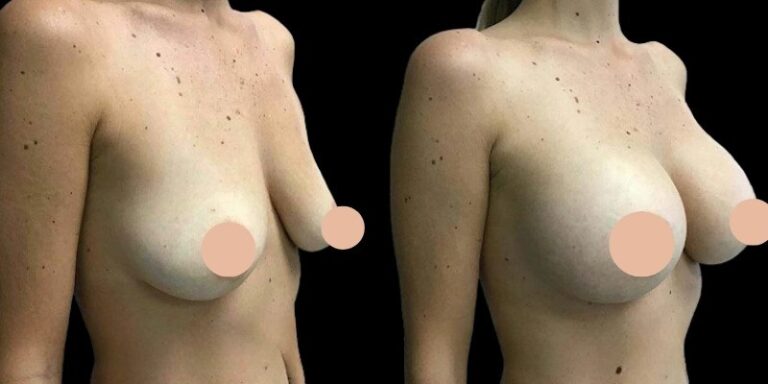What are the Initial Indicators of Overlapping Teeth?
The initial indicators of overlapping teeth often become noticeable during the stages of tooth eruption, typically in childhood and adolescence as the permanent teeth begin to come in. Parents may observe that newly emerging teeth are not aligning properly with existing teeth, appearing crowded or pushed forward or backward. In some cases, individuals themselves may become aware of a lack of space in their jaw, leading to teeth erupting in irregular positions, partially or fully overlapping adjacent teeth. A visual inspection of the smile, either by the individual or during a routine dental check-up, can often reveal these early signs of misalignment. The degree of overlap can vary, sometimes affecting only a few teeth initially and potentially worsening over time as more permanent teeth erupt.
Why is it Important to Seek Professional Evaluation for Overlapping Teeth?
Seeking professional evaluation for overlapping teeth is crucial for several reasons that extend beyond mere aesthetics. A qualified dental professional, such as a general dentist or an orthodontist, possesses the expertise to accurately diagnose the underlying causes and extent of the misalignment. A thorough examination, which may include visual assessment, dental impressions, and radiographic imaging, allows for a comprehensive understanding of the individual’s unique dental structure and the specific nature of the overlapping. This professional evaluation is essential for determining the most appropriate and effective treatment options. Furthermore, addressing overlapping teeth can have significant implications for long-term oral health, as misaligned teeth are often more difficult to clean effectively, increasing the risk of dental problems. A professional evaluation provides insights into these potential risks and the benefits of timely intervention.
What are the Primary Professional Treatment Approaches for Overlapping Teeth?
The primary professional treatment approaches for overlapping teeth involve orthodontic interventions aimed at gradually repositioning the teeth into proper alignment. The two most common methods employed are traditional fixed orthodontic appliances (braces) and clear aligner therapy. Traditional braces consist of brackets bonded to the teeth and connected by archwires that apply controlled forces to guide tooth movement. Clear aligners are a series of custom-made, removable plastic trays that gradually shift the teeth into the desired positions. In some instances, adjunctive procedures, such as creating space through interproximal reduction or, in more severe cases, tooth extraction, may be necessary to facilitate proper alignment. The choice of treatment approach depends on various factors, including the complexity of the overlapping, the individual’s age, and their preferences regarding aesthetics and lifestyle.
How Do Traditional Fixed Orthodontic Appliances Correct Overlapping Teeth?
Traditional fixed orthodontic appliances, or braces, correct overlapping teeth through a systematic application of controlled forces. Brackets are bonded to the surface of each tooth, providing an anchor point. Archwires, made of specialized metals, are then carefully threaded through these brackets and held in place. The archwires are shaped and periodically adjusted by an orthodontic professional to exert gentle and consistent pressure on the teeth. This pressure stimulates the bone remodeling process, allowing the teeth to gradually move into their correct positions within the jaw. Over time, through a series of adjustments and archwire changes, the overlapping teeth are guided into proper alignment, resulting in a straighter and more harmonious smile.
What Role Does Clear Aligner Therapy Play in Addressing Overlapping Teeth?
Clear aligner therapy offers a modern and increasingly popular alternative to traditional braces for addressing mild to moderate cases of overlapping teeth. This treatment involves a series of custom-designed, transparent plastic aligners that fit snugly over the teeth. Each set of aligners is precisely calibrated to represent a specific stage in the tooth alignment process. Patients wear each set of aligners for a prescribed period, typically one to two weeks, before progressing to the next set in the series. The aligners apply gentle, controlled pressure to gradually shift the overlapping teeth into their desired positions. The near invisibility and removability of clear aligners for eating and oral hygiene practices make them an attractive option for many individuals seeking a more discreet orthodontic treatment.
Are There Situations Where Additional Procedures are Necessary for Overlapping Teeth?
In some instances of significant overlapping or crowding, achieving optimal alignment of the teeth may require additional procedures beyond the use of braces or clear aligners. One such procedure is interproximal reduction (IPR), also known as tooth stripping or slenderizing. This involves the careful removal of a small amount of enamel from between adjacent teeth to create a few extra millimeters of space within the dental arch. In cases of severe crowding where there is simply not enough room in the jaw to accommodate all the teeth without significant overlap and protrusion, the extraction of one or more teeth may be considered as a necessary step to create the space needed for the remaining teeth to align correctly. The need for such adjunctive procedures is determined on a case-by-case basis as part of a comprehensive orthodontic treatment plan.
What is the Typical Duration of Treatment for Overlapping Teeth?
The duration of treatment for overlapping teeth can vary significantly depending on the complexity of the case, the chosen treatment method (braces or clear aligners), and individual biological factors. Mild to moderate cases of overlapping treated with clear aligners may take anywhere from several months to about a year. More complex cases involving significant overlap and treated with traditional braces can range from one to two years or even longer. Factors such as the degree of tooth movement required, patient compliance with treatment instructions (including wearing aligners as prescribed and attending scheduled appointments), and the individual’s response to orthodontic forces can all influence the overall treatment timeline.
What Happens After the Active Treatment for Overlapping Teeth is Complete?
Once the active phase of orthodontic treatment for overlapping teeth is completed and the desired alignment has been achieved, a crucial retention phase follows. Teeth have a natural tendency to relapse or drift back towards their original positions. To prevent this, retainers are used. Retainers can be removable appliances, such as clear plastic retainers or Hawley retainers with wires, or they can be fixed wires bonded to the back surfaces of the teeth. The type of retainer recommended and the duration for which it needs to be worn vary depending on individual circumstances and the orthodontist’s assessment of the stability of the achieved alignment. Consistent and diligent use of retainers, as instructed, is essential for maintaining the corrected smile in the long term.



